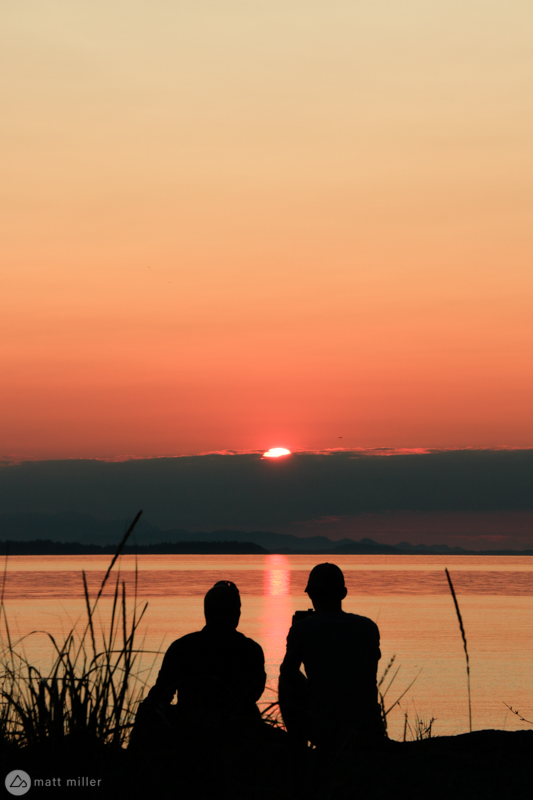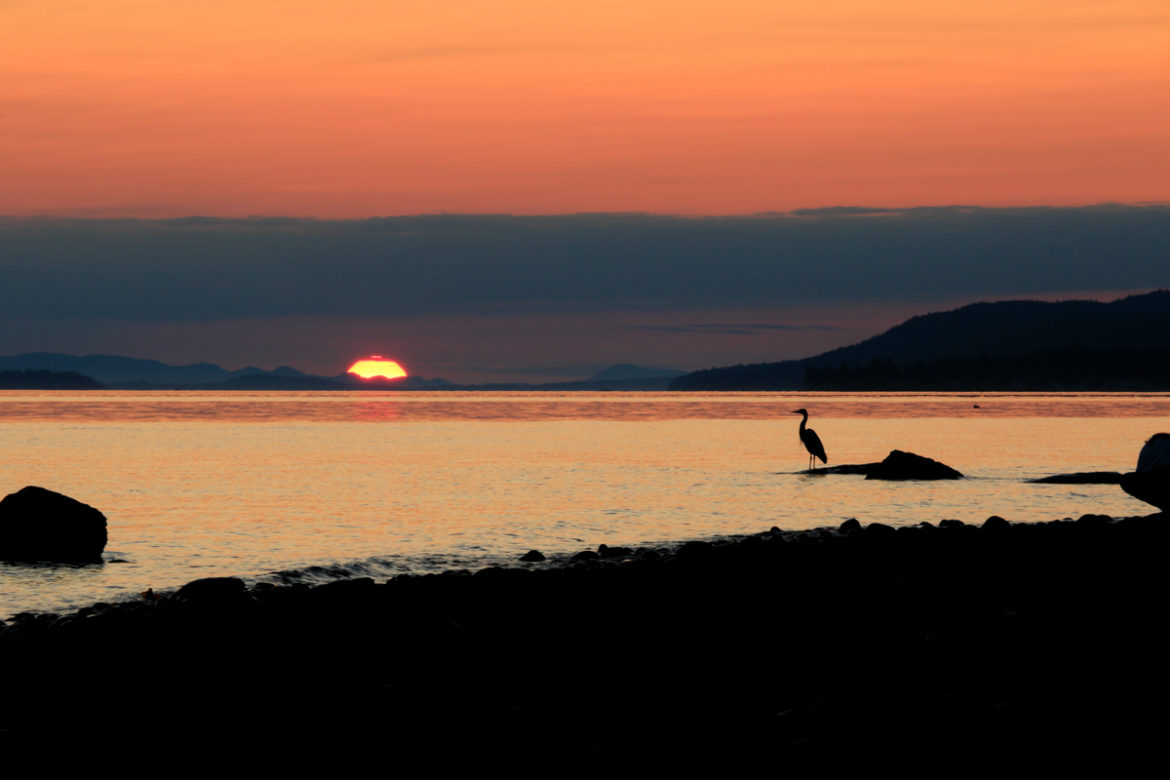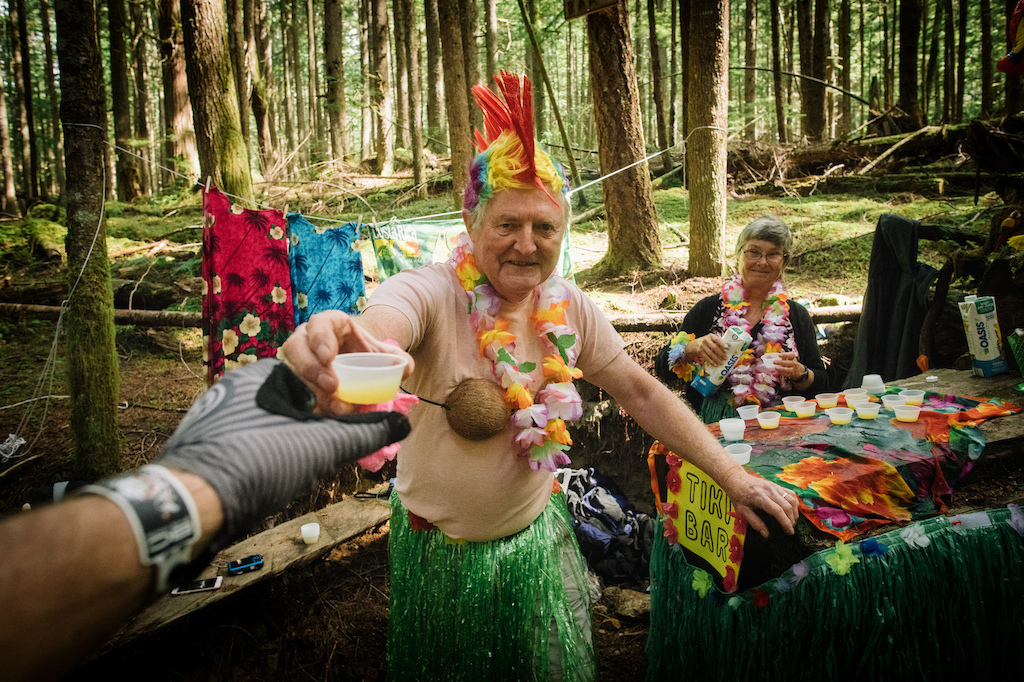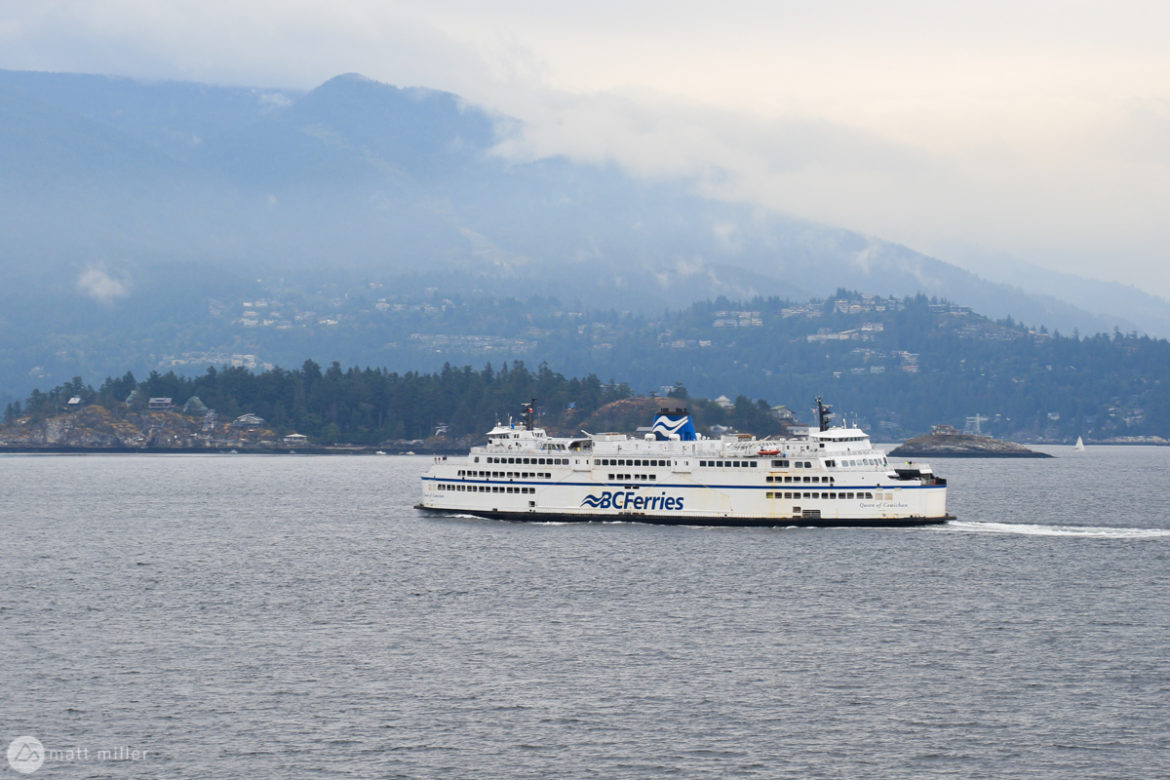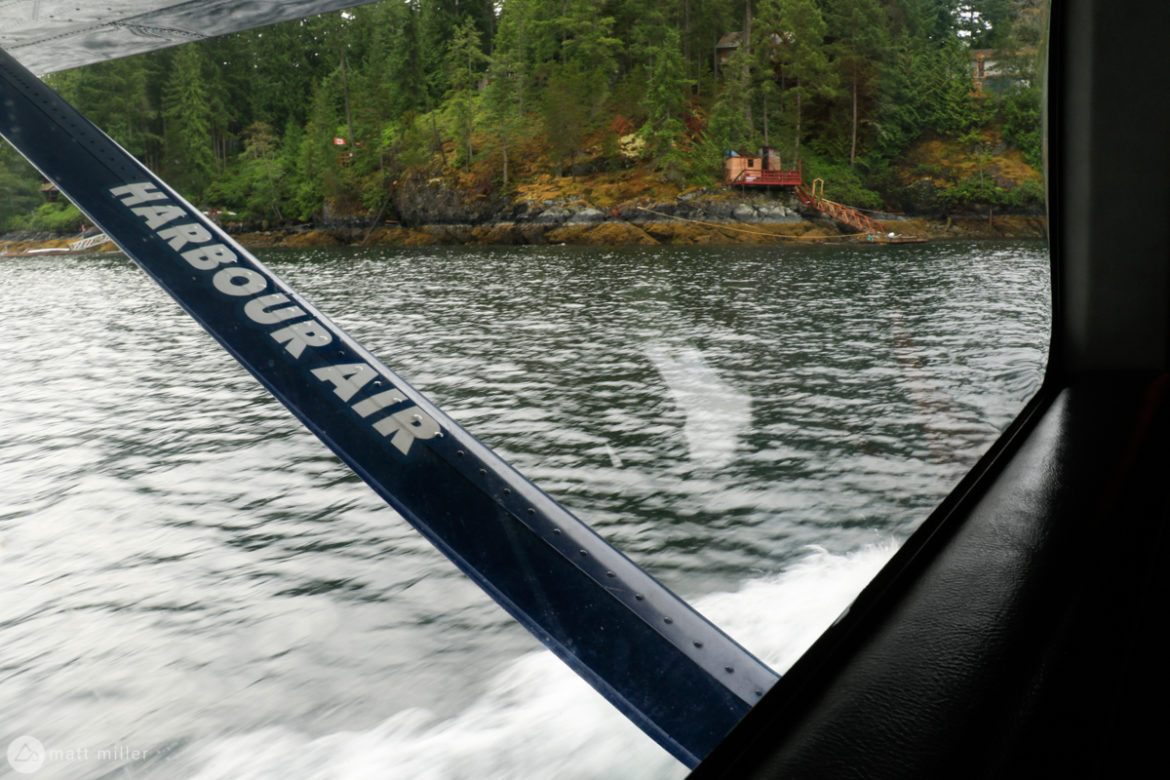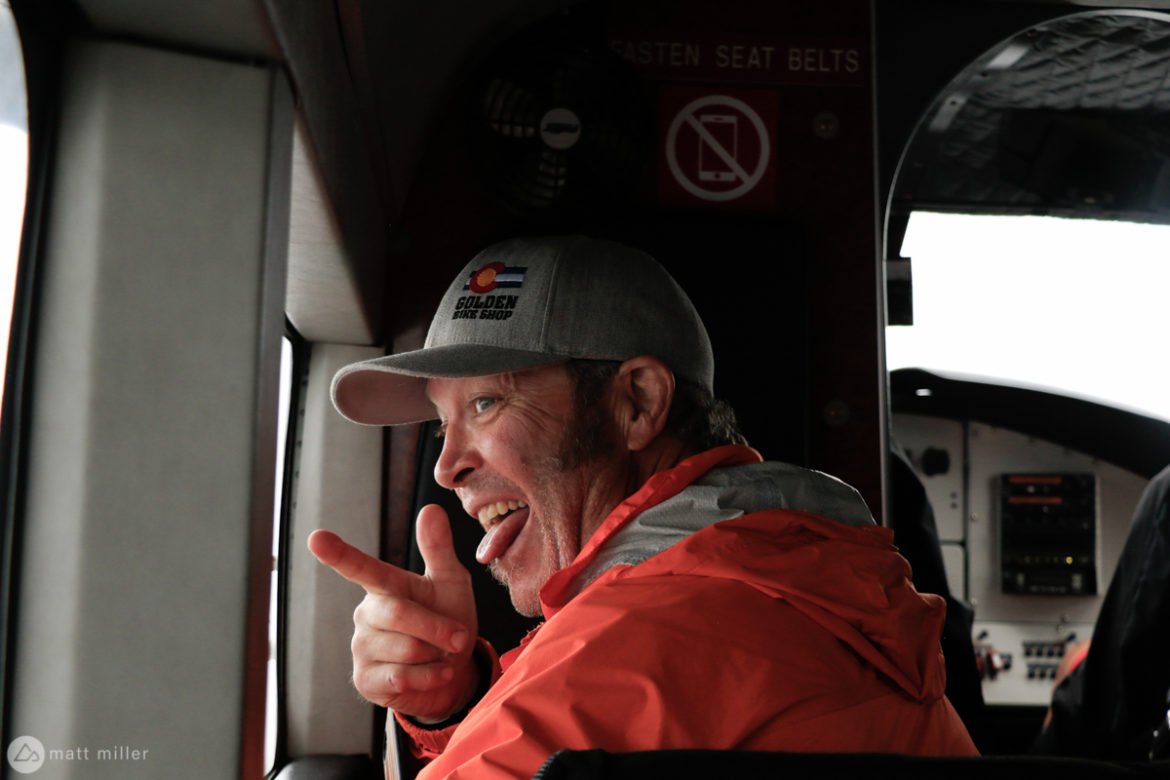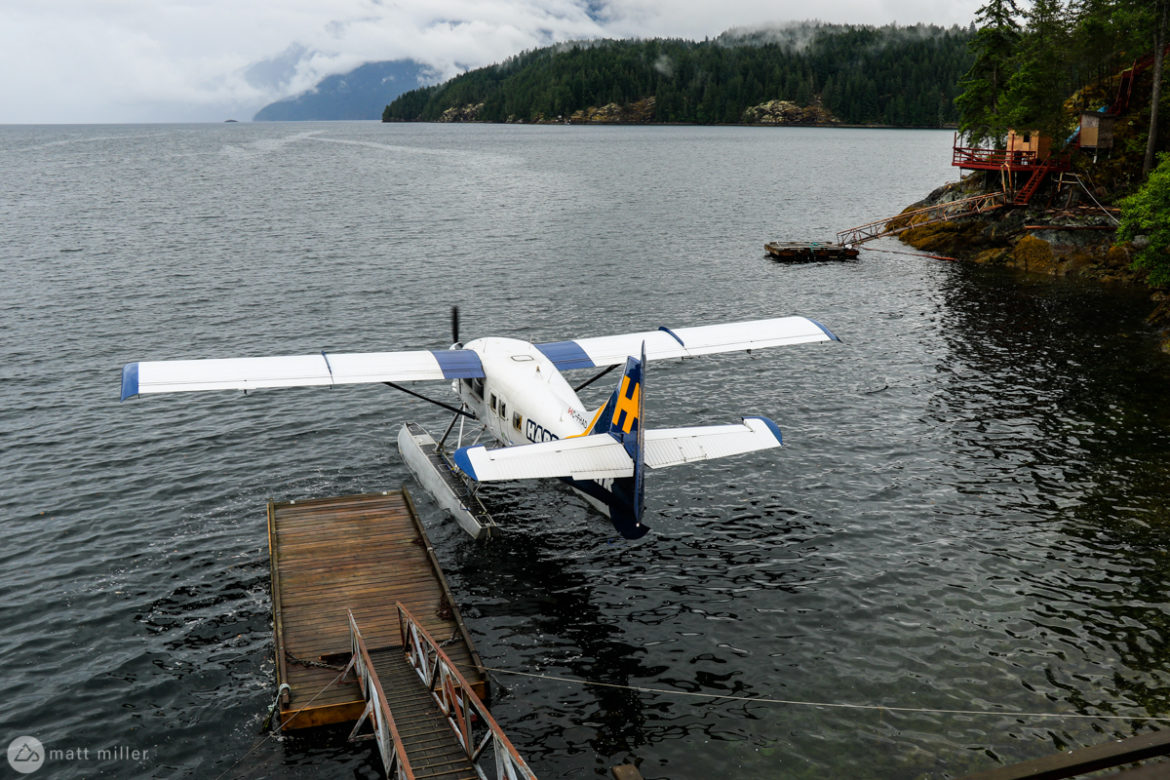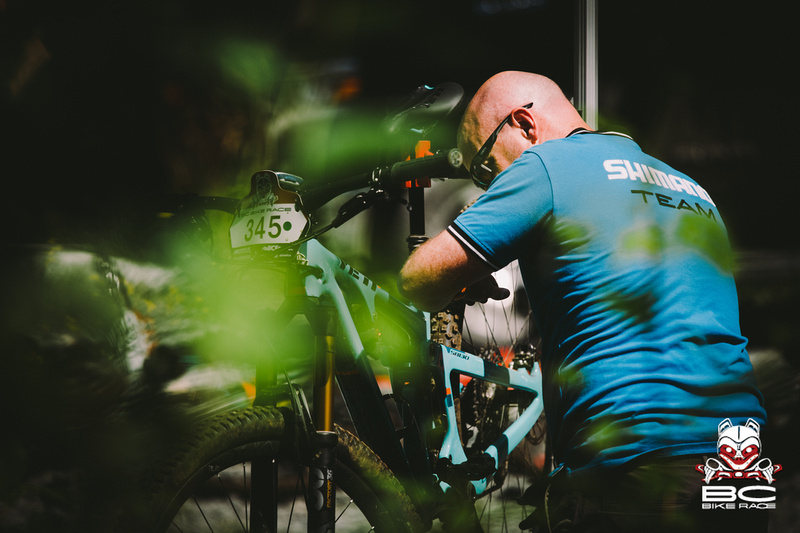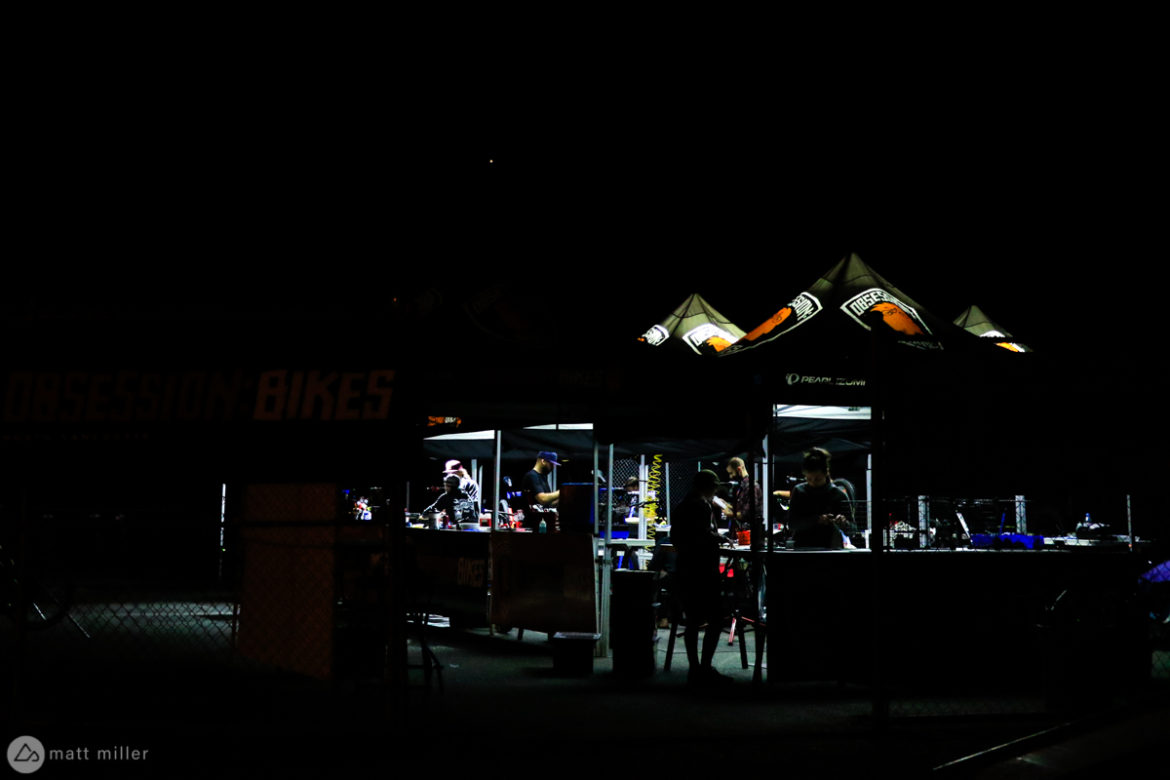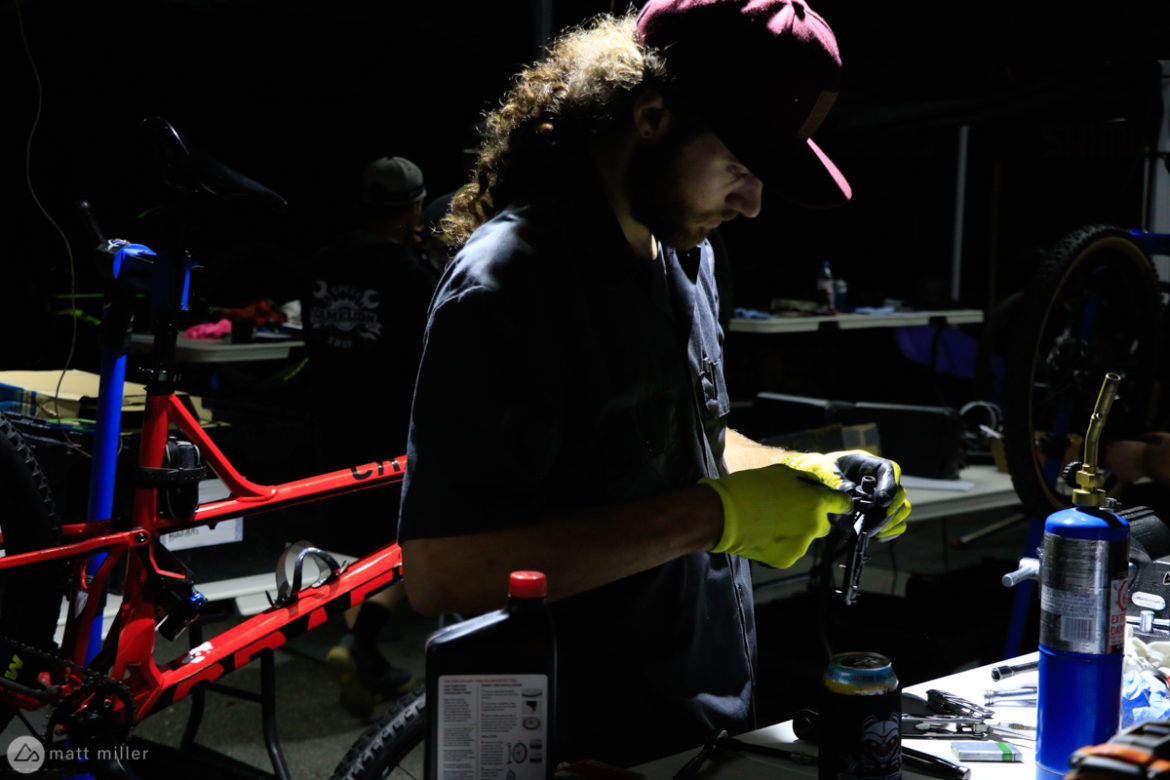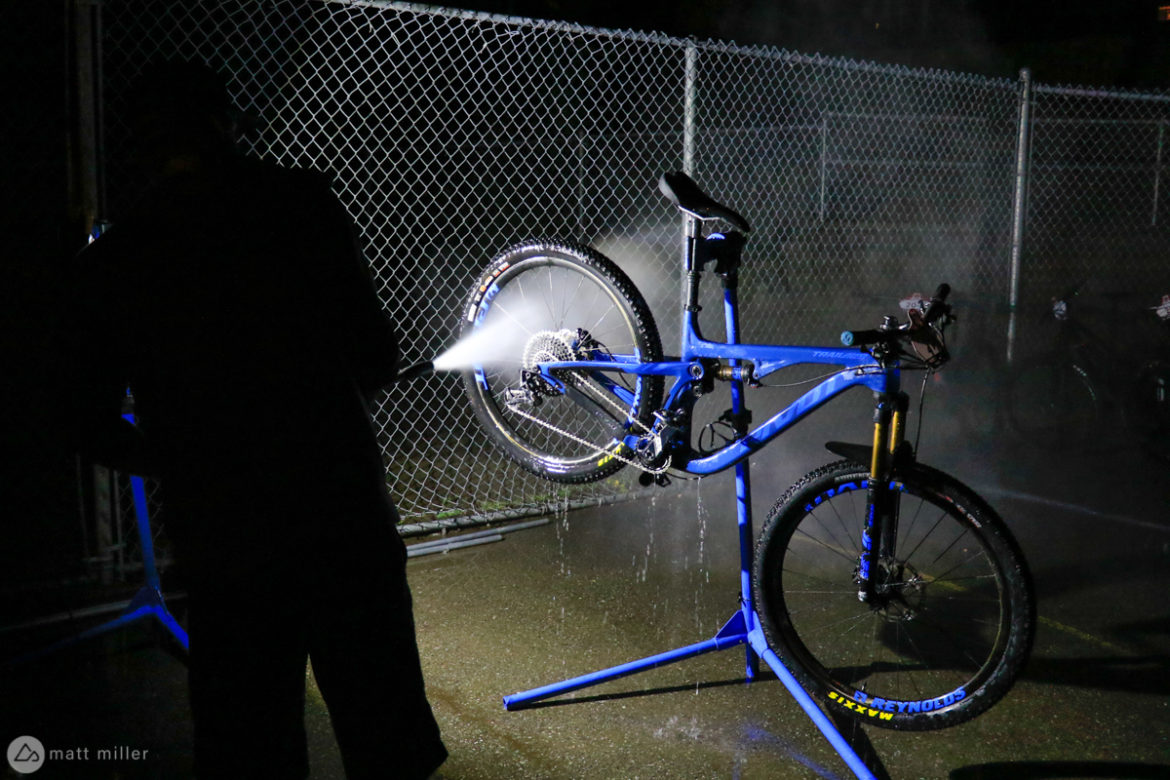
I felt like the man after crossing the finish line of the first BC Bike Race (BCBR) stage in Cowichan Valley. I felt powerful after clearing the climbs on an opening 24-mile day with 4,300 feet of climbing. I felt competent after riding the steep chutes and craggy rocks on the Maple Mountain descent. After five to six months of training for BCBR, I felt really, really good to have the first of seven days of racing in the bag, aside from one minor factor: my nipples were on fire.
There were a few times when I reconsidered my decision to sign up for BCBR. Chafed nipples were actually not on the list. A sprained wrist, swollen ankle, and 40-mile road bike rides after eight hour work days were. A state of fatigue becomes your new normal training for BCBR, and occasionally it adds up. For me, it added up when I squeezed in after work training rides, day after day.
Wednesdays became my road bike days, with a goal of two to three hours, or 40-miles, spinning at a fast pace on flat bike paths to even out my cadence.
A Thursday evening ride in late May the day after one of those road rides soured after I clipped a tree two minutes into a major descent that took me over an hour to summit. I landed on my left wrist and gingerly finished the rocky, five-mile downhill.
The next day, coming back from a brewery on my road bike, I jammed my front wheel into a step when I arrived home and sent my ankle into the greasy-toothed chainring, surely bruising or chipping a bone, and causing a stream of blood to pool in the bottom of my Teva.
At this point in the first week of June, just a month out from the race, the training miles felt imperative. The only way to get ready for a seven day stage race, with back-to-back 30+ mile days, is to ride consecutive days in a row for consecutive weeks in a row. That night, I wrapped and elevated my wrist, and my ankle, popped some CBD and Motrin, and got ready for the weekend.
My training plan, taken from the BCBR website, called for two back-to-back big rides on weekends. If I could safely manage the swelling and pain, then I was still going to ride the next day, and I did. Looking back, it probably wasn’t the best way to approach the situation, but I managed it day by day and that probably is the best approach to the BC Bike Race.

For average riders like myself who aren’t accustomed to multi-day mountain bike stage races, the entire experience from registration to the finish line was new. Riding BC’s technical, rocky, and root-swathed coastline is new for most, and so is riding a mountain bike for seven big days in a row.
The BCBR crew knows that it’s not just hotshot pros that come out for the race, although some of the world’s best are certainly there. The majority of riders are average Joes and Janes looking for the experience of a lifetime, and a week-and-a-half bike vacation on some of the world’s best singletrack, which has evolved over time.
“Back in the day, there wasn’t much singletrack inventory,” says Andreas Hestler, director of marketing for BCBR and one of the original founders. “Even in a place like Cumberland that can hold two stages now, 13 years ago, it didn’t have that many trails.”

In the early days, singletrack throughout the week was shorter and connecting gravel roads were longer. Hestler estimates that the race was about 50% singletrack, a lot of it still gnarly and taken on by riders with skinnier tires and more primitive mountain bikes without dropper posts. As trail networks and mountain bike communities grew over time, BC Bike Race singletrack inventory increased. Now it’s probably closer to 75% of the course per day, and based on my observation, that seems to be about right.
On day two, we woke up to rain in Cumberland. The loam might soak it up, but the roots aren’t as porous, so the trails are partly a slip-n-slide. Shortly after dipping into the first descent I crossed over a patch of roots with my front tire slightly off-camber and hit the deck.
My brake lever was a little tweaked, so I whipped out my multi-tool and found my tiny little Torx bit and got it back into place while 15 or so of the 600 racers on course passed me. At this point, I realized that my lightly tinted sunglasses were too dark for a day in the cloud-covered BC forest, and were only preventing me from correctly analyzing the trail, so I stuffed them in my pocket and took off.
The next few kilometers were my personal favorite of the 300+ that we rode all week, and the trail ahead was precisely what I wanted out of riding Vancouver Island. Brightly lit fog hovered over the forest canopy and filled in the small spaces between the towering trees. Electric green moss starts high on the tree trunks and leads down to cover everything on the ground except for a dark brown strip of trail. It’s a scene out of a sci-fi movie, and the image that comes to mind when most think about mountain biking in BC.

Riding in this scene feels as good as it sounds or looks. The descending is steep and technical, with fast drops and technical and slippery rocks. Locals gathered around a slick slab of rock and cheered or heckled as riders went for the drop, or got off to walk.
After the trail tapered out, we hit a gravel road and the first aid station of the day. Brett Tippie handed out watermelon slices, and if Tippie is offering, then you can’t say no. On top of the watermelon slice, I ate a half of a peanut butter and jelly sandwich, grabbed some potato chips, Red Bull, and Clif Shot Bloks for the road. With this routine, I never managed to bonk. I credit the peanut butter and jellies.
You can’t cheat the caloric expenditure at BCBR. It’s hard to be full for a week straight, but your body requires it. Throughout the week, I heard multiple people say that when they tried to eat light at dinner, they bonked quickly the next day.

The quality of food is pretty amazing the whole week, so it’s easy to manage stuffing your face, and it’s key for day-to-day recovery. The aid stations are key for hour-to-hour recovery. While never-ending singletrack seven days in a row sounds great in theory, it doesn’t work.
“There’s a point where there’s too much singletrack and you’re praying for a gravel road,” says Hestler. “We did arrive at that conclusion. There is a right amount of singletrack and it’s not 100 percent.”
Not only is the right amount of singletrack important for physical recovery, but mental as well.
The next day in Cumberland on the second set of trails for day three, I was within a few miles of the finish line. Since it was a short day, I decided to go all out and essentially skip my recovery time at the aid station. I grabbed some Shot Bloks, and a small cup of Red Bull, but I stopped for less than a minute. On a flowing descent and a right-hand, bermed turn, my wheel went right and I went straight into the berm, tweaking my handlebars this time and breaking my Wahoo GPS mount.
A friend I’d made that also lives in Colorado was riding behind me, and grabbed his brakes before running me over. “You OK, man?”
“Yeah, I’m all good. Go ahead. I’ll catch up.” With another crash, and an expensive break, day four needed to be a slow day for me. My body was fine, but my brain was running on fumes from processing miles and miles of new trail, three days in a row. Eventually, you run out of adrenaline.

We got a glimpse of what to expect on day four from the “welcoming” in Powell River, and it’s laid back. This is sort of an unofficial tradition, but as racers cross over from Vancouver Island back to the mainland of the coast, locals from Powell River welcome BC Bike Race with signs, music, and applause. As the world demands less paper, Powell River’s enormous paper mill has downsized over the years, and residents have embraced mountain bike tourism.
Camp was right on the beach, so I threw my bags into my tent and walked along the coast for a minute. The sun closed in on the horizon, and a spectrum of colors exploded. People ran for their phones and waded into the ocean to watch. The beach was like a movie theater with hundreds of people and the feature presentation cast onto the ocean’s end, lasting indefinitely.
Powell River was the longest stage of the week thus far, and the flattest. That said, the trails were the most technical flat trails I’ve ever ridden. I thought I’d cruise at a fast cadence, but my tires fought for traction on the tiny roots and soft loam. I complained about it to a fellow rider and he blurted out a common statement at BCBR. “There are no free kilometers here.”
The Powell River Welcome continued on the trails. Locals came out in hordes, all dressed up, and built makeshift drink stands to feed racers water, pineapple juice, Coca-Cola, and whiskey.
Over the years, BCBR has changed stage locations and strategically placed them on certain days of the week so that the race flows well, racers keep their motivation and energy high, and participants flow in and out of the more populated areas at the right times. North Vancouver used to be an entire stage, but is now just the prologue stage. BCBR used to finish in Whistler, but word from the BCBR crew was that the town of Whistler didn’t seem to appreciate the race anymore, and the tourism didn’t necessarily benefit from BCBR.
“When you see the welcome in a place like Powell River, you want to stay there and keep that relationship,” says Hestler.
Now, BCBR is settled into a good flow and routine, but the stages and trails still change about 15-20% each year, as the race is always looking to add good singletrack here, and take out trail that doesn’t work, there.
Although days four and five were still long, with five, the queen stage at 35 miles and 5,000 feet of climbing, they weren’t as continuously technical and it gave me the mental break I needed, though my legs felt like they were filled with steel marbles.
Five minutes after my friend Rick (my tent mate, also from my hometown) and I left the first aid station on the fifth stage, about 12 miles into the 35-mile day, Rick’s dropper post remote cable snapped while his post was in the down position. On the most hill-rific stage of the week, he was left trying to muscle through the steep hills, and flat, pedally dirt roads. “Rick, I’m gonna keep going ahead. I’ll let bike patrol know you need a hand.”
Sure enough, within twenty minutes I spotted bike patrol. There are multiple patrollers on course every day on bike and moto. All of them are exceptionally fit, and pedal the course every day with gear on their backs, or wrangle their motos through tight mountain bike trails to help people in need, whether a racer has broken something on their bike or body.
With this crew, it’s near impossible for a racer not to finish BCBR. Hestler recounts the story of a gal who raced the Absa Cape Epic the year before, and felt threatened by what patrol meant for that race. They were more of a course sweep, which enforced cut-off times and took racers off the course if they weren’t in the right place by the allotted time.
The BCBR patrollers however are out there until the last racer crosses the finish line. They can fix a lot of problems on the spot, or creatively remedy an issue so that a bike is rideable until the end of the stage. If the racer is determined to finish, patrol will give them every tool to get them to Point B.
At every aid station, Shimano had a bike aid station and provided service to riders at two points on every stage. If they couldn’t fix something, Shimano would lend the racer a bike to finish the day.
The bike patrollers swapped Rick’s dropper post cable out within ten minutes of seeing him. He said the patrollers worked side by side and communicated with each other like a sniper and spotter would in a special operations unit. Just like that, he was back on a 100% operable bike to finish the course.
When bikes need serious service during the week at BCBR, which can often be due to the serious riding and difficult terrain, technicians from Obsession Bikes work from sundown to sunrise, making sure that everyone has a bike to ride when they wake up.
“We’re not giving anyone a mechanical reason not to continue,” says Fraser Newton. “They’re going to wake up in the morning and have something to ride, even if it’s our own bike.”
Newton has worked for the Obsession Bikes crew every year since the debut in July of 2007. The crew is formed by bike technicians from all over the world and make up a ragtag team that knows how to party just as much as they know how to repair mountain bikes. Every day, their mobile bike shop moves with the BCBR logistics circus of trucks and trailers transporting bikes, tents, showers, bathrooms, and everything else. The shop buzzes with movement and speakers pound house music until 5am to keep the energy high.
Obsession sees every type of repair imaginable. Fixing carbon frames used to be one of the toughest challenges. With new epoxy and wrap material, it’s now one of the easiest. By the end of the Day 0, before the first BCBR stage actually kicked off, they had repaired three carbon frames.
Newton has never raced BCBR, but has been at every one since the beginning. Unlike the BCBR volunteers that give their time free of charge, the Obsession techs are paid. Still, it seemed odd to me that so many people would take time off from their lives at home to work on bikes at BCBR. Most of the other techs have been there for several years already, and sign up for the next year before the race is even over. For Newton, it’s an easy choice every year.
“It’s just family. Life’s too crazy to surround yourself with people you can’t work beside.”
The same holds true for life and it’s why so many people sign up for BCBR. After the final day of racing in Squamish and the fourth or fifth beer at the after-party, I thought back to a moment in yoga on the night of Day 5. Near the end of the night’s class, I pretzeled myself into a shoulder stretch and looked to my left. Then I noticed that the racer next to me had a cast on his left arm. I asked him what happened.
“I crashed on Day Three and broke my arm.”
“Damn. I’m sorry to hear that, man.”
“It’s all good,” he said. “At least I can still hang out with all the cool people here.”
Whether it was hearing his story, or seeing a group of limbless war veterans weave their bikes through rocks and roots with prosthetic legs, falling several times, and getting back up every time, I thought back on my sprained wrist, and swollen ankle, and inconvenient road bike rides. I was complaining about riding my bike a lot to get ready for one of the best weeks of my life.

I could elaborate more on the final few days, and talk about the spectacularly built flow trails in Squamish that parallel the never ending fire road climbs, and the deeper than expected conversations I had with strangers while we sweated and cursed alongside one another up the gradients.
The racing and the trails often times take a backseat to the greater dynamics of BCBR, like the vacationing mechanics, the crew that stays on course eight hours every day to make sure everyone finishes, or the guy with a broken arm who still wants to hang out with everyone when they finish, despite the fact that he can’t ride.
A lot of the stress surrounding my preparation for BC Bike Race happened during my preparation. And, there was a lot of preparation involved.
Yet, day after day during the race, I found that it didn’t matter how or when I finished, it was enough just to be at BCBR, as getting there is a journey on its own. Being present for the week, I took that for granted when I lined up in the start gate on Day 0.











